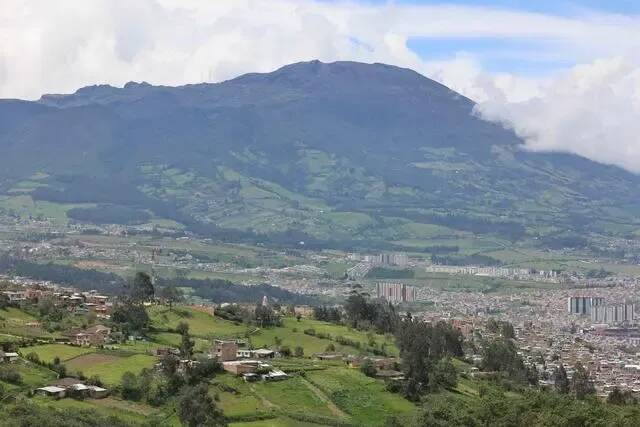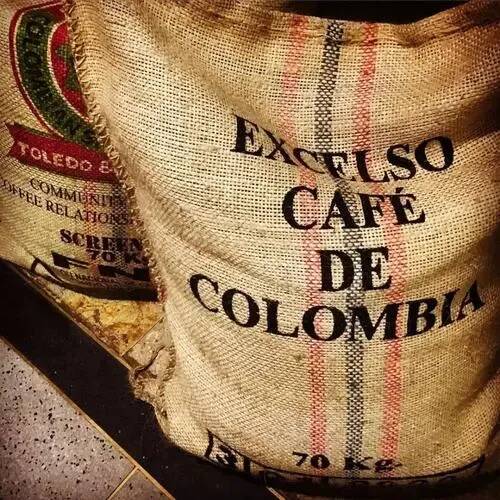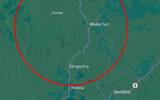Introduction to Nalinglong, a coffee producing area in Colombia
South America is located in the southwest hemisphere, is the fourth largest continent in land area, while the Andes almost runs through the western part of South America, and South America is a continent with more volcanoes, frequent earthquakes and strong earthquakes in the world. The climate is warm and humid, mainly tropical, abundant rainfall, because of a variety of environmental resources, many countries in the continent mainly grow coffee and other agriculture. Such as Ecuador, Peru, Brazil and Colombia.
In the past, Colombia has been in the midst of war, social unrest, coffee and other development has come to a standstill, but now it has become a world-recognized Arabica coffee bean producer and the world's third largest coffee producer.

According to some records, coffee may have been introduced into Colombia through Jesuit monks in 1723 and slowly spread across the country. However, during the period 1899-1903, war broke out in the Colombian country, resulting in a sharp decline in the population of coffee growers and a large number of plantations abandoned. When the war ended, in order to save the coffee industry, the government began to integrate the wasteland and divide it into small plots, selling it to farmers at very low prices, allowing them to grow coffee and other crops and start a new life. By 1912, coffee had developed and accounted for 50% of Colombia's total exports.
But coffee produced by small coffee farms does not have much say in the international coffee market. So in 1920, at the suggestion of a farmer, the Colombian Coffee Union was formed to protect the interests of small coffee farms. Since then, the organization has grown, and in 1927 led to the more authoritative and regulated Colombian National Coffee producers Association, or FNC. Since the establishment of FNC, a series of measures have been taken, including strict quality control, the establishment of the National Coffee Research Center, and the enhancement of the global competitiveness and influence of Colombian coffee.

The high yield of Colombian coffee depends on its terrain and climate. Colombia has three Codiera mountains running north and south to the Andes, and coffee is grown along the highlands of these mountains. There is fertile volcanic soil on both sides of the mountains, and the mountain steps provide a diverse climate, so it is the harvest season all year round, with different kinds of coffee ripening at different times.
Colombia has a large territory and has a number of coffee producing areas, while the main coffee producing areas include the provinces of Cauca (Cauca), Santander (Santander), Narino (Narino), Tolima (Tolima) and Huila (Huilan). There are two harvest seasons in a year, the main season is from October to January, and the secondary season is from April to July.
Among them, Huila and Tolima are better known, but their Narino also produces high-quality coffee beans and appears on the COE list all the year round.
Narino, also known as Narinho, is located on the southwest coast of Colombia, near Ecuador, where there are many rivers and lakes, as well as Kumbar and Galalas volcanoes. These natural conditions make the agriculture developed here. Due to its proximity to the equator, the coffee in this producing area is famous for its high complex flavor and floral aroma, and there are many famous coffee estates here. Such as Santa Ana Santa Ana Manor, which won the second place in COE, Colombia in 2023.
The Santa Ana estate of Santa Ana is currently managed by Carlos Alberto Belalc á zar and Raquel Lasso Mu ñ oz. They are a couple, of whom the wife, Raquel Lasso Mu ñ oz, is the founder of the FUDAM smallholder producers' organization and has served as chairman for many years and manages the bohemian (La Bohemia) estate. Her husband, Carlos Alberto Belalc á zar, is a coffee producer who has worked for about 30 years and has rich knowledge and experience in planting and processing. At present, the couple mainly promote coffee in Nalinglong province.
The couple's estate, which used to grow mainly Caturra, has been converted to Geisha in recent years, about 1990 meters above sea level at Santa Ana and 2150 meters above sea level at Bohemia. They began participating in COE in 2017, finishing second with 90.39 points for Rose Summer of Santa Ana Manor and fifth place for Rose Summer of Bohemia Manor with 87.78 points in COE, Colombia in 2023.
Important Notice :
前街咖啡 FrontStreet Coffee has moved to new addredd:
FrontStreet Coffee Address: 315,Donghua East Road,GuangZhou
Tel:020 38364473
- Prev

A terrible kidnapping occurred in Ethiopia! The level of security is worrying
According to local media reports in Ethiopia, in recent times, Ethiopia has been troubled and there have been constant conflicts in the country. In May, it clashed with Fano forces in the Amhara region, and the government forces deployed as many as 90000 recruits to conduct military operations, which still did not work. However, the previous
- Next

What is bead coffee? What is the difference between round beans and flat beans? Are coffee beans also divided into male and female? Why are PB-grade beans more expensive?
I believe that everyone has found a few "special cases" in a handful of beans. The appearance of these "special cases" coffee beans will be very different from other coffee beans. Common coffee beans have a semicircle in appearance with a flat side. However, the appearance of these "special cases" coffee beans does not have a flat surface, and the overall shape is an ellipse
Related
- Can artificial hand brewing replace the barista's real hand brewing coffee? What is the difference between making coffee with fake hands and making coffee with real hands?
- Can't sell it?! Coca-Cola gives up selling Costa!
- The brewing parameters of the world's top rose summer coffee, ratio, water temperature, grinding and sharing! Graphic teaching on Emerald Manor Rose Summer Brewing Method!
- Jasmine milk tea, a new cup of ice?! Netizen: Why don't you just sell ice cubes
- Is it necessary to buy a cloth powder for an espresso machine? Why should we evenly distribute the powder when extracting espresso?
- What is the grinding ratio, water temperature and powder amount needed to make Combo in Mocha pot coffee? Mocha pot is suitable for making coffee deep and light baked beans??
- Caught off guard! Starbucks '15-year-old store quietly closes!
- Naixue Drink drank a stone and claimed a claim was retaliated by the merchant?!
- What is the difference between a cake filter cup and a V60 conical filter cup? What are the advantages and disadvantages of the flat-bottomed filter cup brewing solution?
- What is the difference between fine coffee powder and medium coarse coffee powder? Do I need to sift out the fine coffee powder for making coffee by hand?

